Step into a world where survival and honor were intertwined, where the whisper of an arrow could rewrite history and shape the future. Today, let’s journey back in time to explore the ancient art of the Native American bow and arrow. This is a legacy that still resonates with us, proving that some things never lose their edge.
Native American bow and arrow are not just survival tools; they are symbols of craftsmanship, innovation, and cultural heritage. This blog post explores the evolution of these iconic weapons, highlights their construction techniques, and examines their modern significance. For history enthusiasts, archery fans, and those intrigued by Native American culture, this is a story of resilience, adaptation, and tradition.
Historical Overview Of Native American Archery
Beginnings And Significance Of Tribes
Native American archery dates back thousands of years, with each tribe having its own unique relationship to these essential tools. From the Navajo to the Cherokee, bows and arrows were not only weapons but an integral part of cultural identity and spiritual practice.
Native American culture roots archery are deeply rooted in survival and subsistence hunting. Different tribes developed their own styles and techniques, influenced by natural resources. World Archery Sport says archery was a common thread that united various tribes, yet it also showcased their diversity in styles and purposes. For many tribes, bows were considered sacred, often used in rituals and passed down through generations.
Bows and arrows went beyond hunting; they played a critical role in tribal warfare and self-defense. With each tribe crafting bows suited to their regional needs, some favored long-range accuracy, while others required compact designs for dense forest navigation. This variance highlights Native American archery’s ingenuity and adaptability.
The Evolution Of Bow Construction Techniques
Native American tribes’ bow construction techniques are a testament to their innovation and resourcefulness. The design and materials varied greatly from one tribe to another, influenced by geography, climate, and available resources.
Archery Historian reports that each tribe brought unique construction methods to their bows, reflecting their environment and cultural practices. For instance, the Plains tribes often used sinew-backed bows for increased strength and flexibility, while the Eastern tribes favored the self-bow, crafted from a single piece of wood.
This evolution wasn’t just about practicality; it was an art form, a way to connect with nature and spirits. The craftsmanship involved in creating a bow was meticulous, requiring a deep understanding of materials and an artistic eye for balance and form.
Also Read : How To Make A Traditional Bow And Arrow: A Step-By-Step Guide
Analyses Of How Native Americans Built Bows And Arrows
Materials And Techniques
Native American bows and arrows were crafted from various materials, each chosen for its unique properties. Wood, sinew, and stone were the most common materials, each playing a critical role in the weapon’s functionality.
Wood used depends on regional availability. Osage orange and ash were popular choices for strength and flexibility, while yew and hickory provided durability. The process of shaping wood into a bow required skillful manipulation, ensuring the right balance of tension and elasticity.
Sinew, typically from deer or buffalo, reinforced the bow, adding strength and resilience. This combination of natural materials created a powerful weapon capable of remarkable precision and power. Stone, on the other hand, was primarily used for crafting arrowheads, with flint and obsidian favored for their sharpness.
Craftsmanship And Design Variations
Craftsmanship in Native American archery was a blend of functionality and aesthetics. Different tribes exhibited distinct design variations, each reflecting their cultural values and environmental needs.
For instance, the Inuit of the Arctic regions crafted bows with shorter, sturdier designs to withstand harsh climates. In contrast, the Lakota Sioux preferred longer bows for hunting on open plains. These design differences were not stylistic; they maximized efficiency and effectiveness in specific environments.
Visuals of these bows show intricate carvings and decorations, often imbued with spiritual significance. These embellishments were not only for display but served as talismans for protection and success in hunting and combat.
Also Read : Discover The Joy Of Archery With A Bow And Arrow For Beginners
Modern-Day Usage And Cultural Relevance
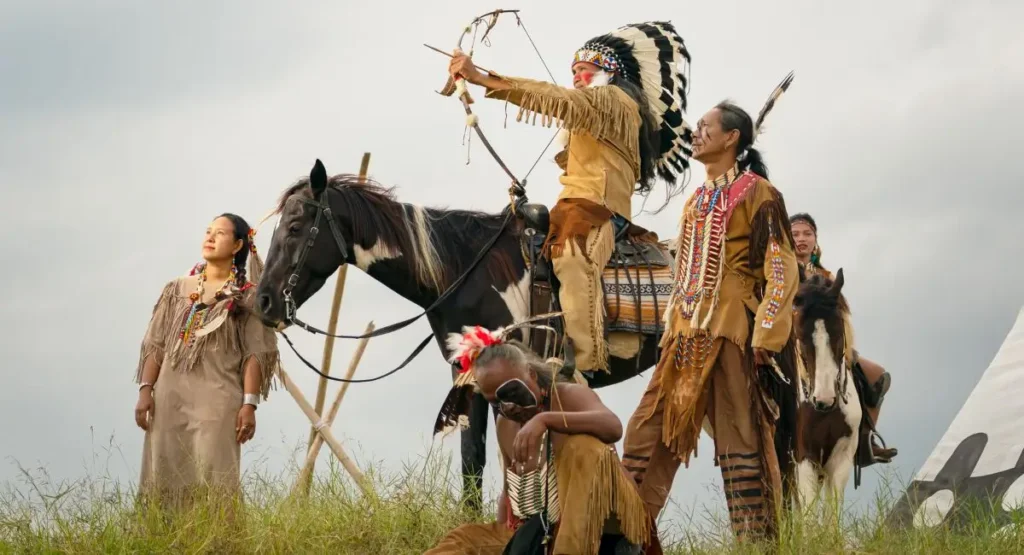
Contemporary Cultural Significance
Native American communities continue to preserve and celebrate archery, viewing it as a vital link to their heritage. Despite time, bows and arrows remain culturally significant.
Many communities actively engage in archery to connect with their ancestors and pass down traditional skills. Interviews with modern Native American archers, archery fosters pride and continuity, bridging past and present.
For example, the Cherokee Nation hosts annual archery events that serve as cultural gatherings, offering a platform for education and celebration. These events showcase traditional skills and Native American unity and resilience.
Modern Archery And Native American Bows
Traditional techniques have found their place in contemporary archery, influencing modern practices worldwide. The integration of Native American bows into modern archery competitions is a testament to their enduring legacy.
Case studies of modern archers, such as those from the Ojibwe Nation, reveal how traditional designs like the flat bow are still used in hunting and sport. The Eastern Shoshone Tribe actively preserves archery skills within their community, emphasizing cultural heritage.
The Cherokee Nation’s participation in international archery competitions further underscores Native American archery’s impact. These events provide a platform to share and celebrate cultural practices, demonstrating that traditional techniques continue to inspire and innovate.
Also Read : Master Your Archery Game With A Deep Understanding Of Bow Parts
Native American Bow And Arrow Vs. Other Traditional Bows
Design And Functionality
The design and functionality of Native American bows offer fascinating comparisons with other traditional bows. Each culture developed its own unique approach to archery, resulting in a diverse array of bow designs.
Native American bows were often shorter and more compact than England’s longbows or Asia’s composite bows. This design was not only practical for their environments but also allowed for swift, agile movements during hunting and combat.
In terms of functionality, Native American bows emphasize versatility and adaptability, capable of handling various tasks from hunting small game to warfare. This adaptability was a key factor in their widespread use across different tribes and regions.
Cultural And Historical Impact
Native American bows have a broader impact on global archery. Their influence extends beyond design, shaping cultural perceptions of archery as a skill and art form.
Historical documents and expert opinions highlight how Native American archery tools contribute to archery evolution worldwide. Their craftsmanship and techniques inspired various cultures, leading to the exchange of ideas and innovations in bow making.
Native American bows also represent resilience and identity. They serve as reminders of Indigenous peoples’ strength and ingenuity, ensuring their legacy inspires future generations.
Conclusion
In conclusion, the Native American bow and arrow are more than mere artifacts of the past; they are living symbols of cultural heritage, ingenuity, and resilience. From their historical origins and tribal significance to their modern-day relevance, these tools continue to captivate and inspire.
Preserving Native American archery craftsmanship and traditions is vital for maintaining a connection to history and honoring Indigenous contributions. By understanding and appreciating their significance, we ensure this legacy remains vibrant and influential.
For those interested in exploring more, consider engaging with Native American communities and participating in archery events. This will enable you to experience firsthand the beauty and skill of this timeless art. Together, we can celebrate and preserve Native American archery’s cultural heritage for generations to come.
Frequently Asked Questions (FAQs)
What Materials Were Used To Make Native American Bows And Arrows?
Native American bows were typically made from strong, flexible woods like ash, hickory, and Osage orange. Arrows were crafted using wood shafts and stone or bone tips, with sinew or plant fibers for binding.
How Did Different Native American Tribes Design Their Bows?
Different tribes designed their bows based on regional needs and available resources. The Plains tribes often crafted longbows for open hunting, while forested regions favored shorter, more maneuverable bows.
Are Native American Bows Still Used Today?
Yes, Native American bows are still used today for traditional hunting, cultural events, and modern archery competitions, preserving their rich craftsmanship heritage.
What Is The History Of The Native American Bow And Arrow?
Native American bow and arrow history dates back thousands of years, serving as essential tools for hunting, warfare, and cultural rituals. Their design and significance evolved with each tribe’s unique environment.
How Can I Make A Traditional Native American Bow?
Making a traditional Native American bow involves selecting appropriate wood, shaping it into a bow, and reinforcing it with sinew. Consult resources like “The Encyclopedia of Native American Bows, Arrows, and Quivers” for detailed instructions.
What Are The Differences Between Native American Bows And Other Traditional Bows?
Native American bows were often shorter and more compact than European longbows or Asian composite bows. Their design emphasized versatility and adaptability to various tasks.
Recommended Articles
- Archery Release Types – A Comprehensive Guide
- Powerful Backyard Archery Range: Beginner’s Ultimate Guide
- Peep Sight On A Compound Bow : A Comprehensive Guide For Beginners
- Best Crossbow Broadhead: Perfect Arrowhead for Precision and Power
- Axe 405 Crossbow Problems: Overcoming Common Problems
- Exploring the Empowerment of Hunting with Recurve Bow

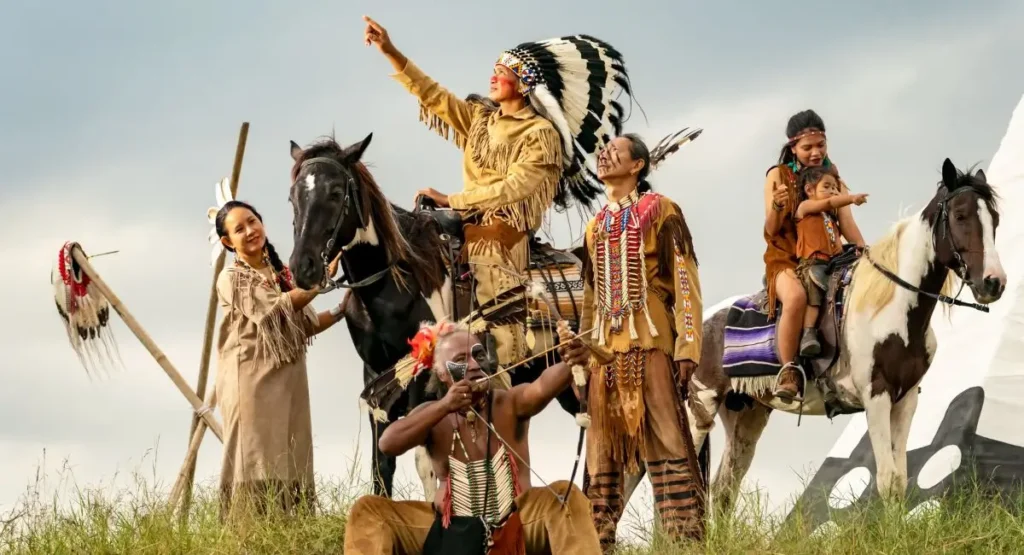
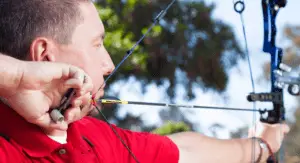
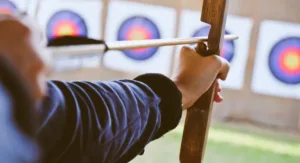

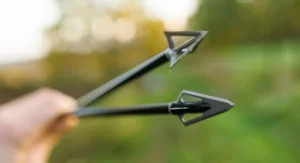
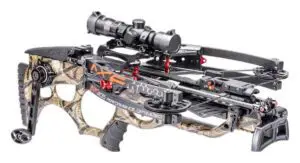
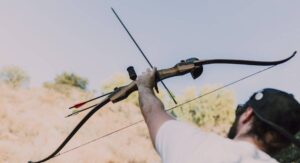
1 thought on “The Evolution And Modern Significance Of The Native American Bow And Arrow”
Comments are closed.